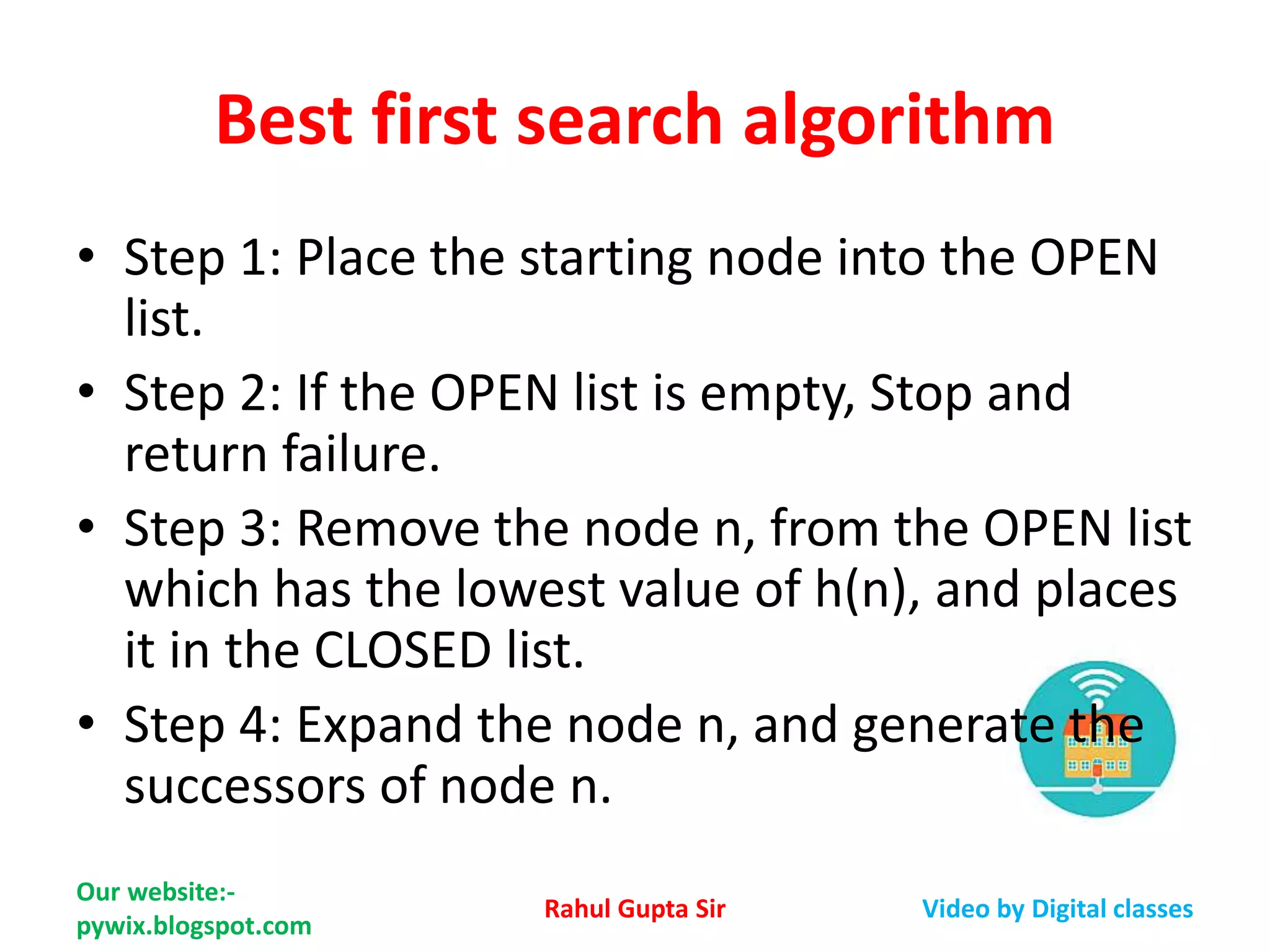The document discusses the best-first search algorithm, which is a combination of depth-first and breadth-first search. It selects the most promising path at each step based on an estimated heuristic cost function. The algorithm maintains OPEN and CLOSED lists, adding successors of expanded nodes to OPEN and moving nodes to CLOSED after expansion. It terminates if it finds the goal node or the OPEN list is empty. An example traces the steps of applying best-first search to a problem space.







![• In this search example, we are using two lists which are OPEN and CLOSED Lists. • Expand the nodes of S and put in the CLOSED list • Initialization: Open [A, B], Closed [S] • Iteration 1: Open [A], Closed [S, B] • Iteration 2: Open [E, F, A], Closed [S, B] : Open [E, A], Closed [S, B, F] • Iteration 3: Open [I, G, E, A], Closed [S, B, F] : Open [I, E, A], Closed [S, B, F, G] • Hence the final solution path will be: S----> B----->F----> G Our website:- pywix.blogspot.com Rahul Gupta Sir Video By Digital Classes](https://image.slidesharecdn.com/bestfirstsearchalgorithminartificialintelligence-200502133946/75/Best-first-search-algorithm-in-Artificial-Intelligence-8-2048.jpg)